For centuries, black holes were merely theoretically speculative idea

- This tiny sliver of the GOODS-N deep field, imaged with many observatories including Hubble, Spitzer, Chandra, XML- Newton, Herschel, the VLT and more, contains a seemingly unremarkable red dot. That object, a quasar-galaxy hybrid from just 730 million years after the Big Bang, may be key to unlocking the mystery of galaxy-black hole evolution. Once speculative, the evidence for the physical existence and ubiquity of black holes is now overwhelming.
(Credit: NASA, ESA, G. Illingworth (UCSC), P. Oesch (UCSC, Yale), R. Bowen (LEI), Cosmic Dawn Center/Niels Bohr Institute/University of Copenhagen, Denmark)
The concept first arose in 1783, when John Michel proposed them.

This image of the Sun, taken on April 20, 2015, shows a number of features common to all stars: magnetic loops, prominence, plasma filaments, and regions of higher and lower temperatures. The Sun is less dense than the Earth, but much larger and more massive, and has a much greater escape velocity from its surface than Earth possesses. If the Sun maintained the same density but were 500 times its present mass, with the corresponding increase in volume, it would itself collapse to a black hole, as first shown in 1783 by John Michel, even in Newtonian gravity.
(Credit: NASA/Solar Dynamics Observatory)
If you maintained the Sun’s density but increased its mass, light couldn’t escape above ~500 solar masses.

Inside a black hole, the spacetime curvature is so large that light cannot escape, nor can particles, under any circumstances. A singularity, based on our current laws of physics, must be an inevitability, although the nature of that singularity is not well understood within the context of General Relativity alone.
Although none were observed, the idea resurged with Karl Schwarzschild’s 1916 solution within Einstein’s General Relativity.
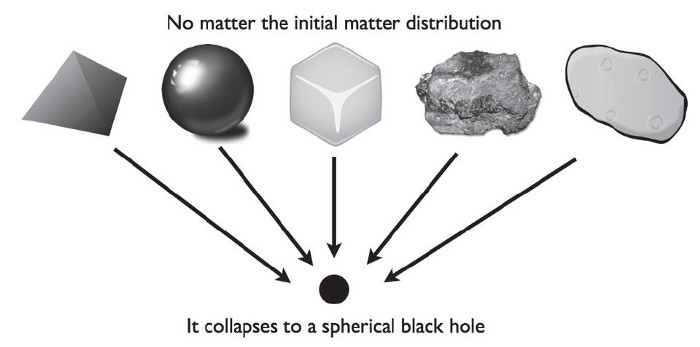
- If you begin with a bound, stationary configuration of mass, and there are no non-gravitational forces or effects present (or they’re all negligible compared to gravity), that mass will always inevitably collapse down to a black hole. It’s one of the main reasons why a static, non-expanding Universe is inconsistent with Einstein’s relativity.
(Credit: E. Siegel/Beyond the Galaxy)
With enough mass in a given spatial volume, collapse to a black hole becomes unavoidable.

- From outside a black hole, all the in falling matter will emit light and always is visible, while nothing from behind the event horizon can get out. But if you were the one who fell into a black hole, your energy could conceivably re-emerge as part of a hot Big Bang in a newborn Universe; the connection between black holes and the birth of new Universes is still speculative, but is dismissed at our own peril.
(Credit: Andrew Hamilton, GILA, University of Colorado)
In 1963, Roy Kerr enhanced Schwarzschild’s solution to incorporate rotation.

- Even for a complicated entity like a massive, rotating black hole (a Kerr black hole), once you cross the (outer) event horizon, regardless of what type of matter or radiation you’re composed of, you’ll fall towards the central singularity and add to the black hole’s mass. What happens at the central singularity is not well-described by current physics, however, as its behavior is pathological.
(Credit: Andrew Hamilton /GILA/University of Colorado)
Contemporaneously, suggestive “black hole” evidence appeared with the discovery of the first quasars.

- The radio feature of the galaxy Alcyone us included a central, active black hole, Collated jets, and two giant radio lobes at either end. The Milky Way is shown at the bottom for scale, as well as “10x the Milky Way” for perspective.
(Credit: M.S.S.L. Oei et al., Astronomy & Astrophysics, 2022)
These extragalactic Quasi-Stellar Radio Sources were ultra-distant, but shone brilliantly in radio light and beyond.
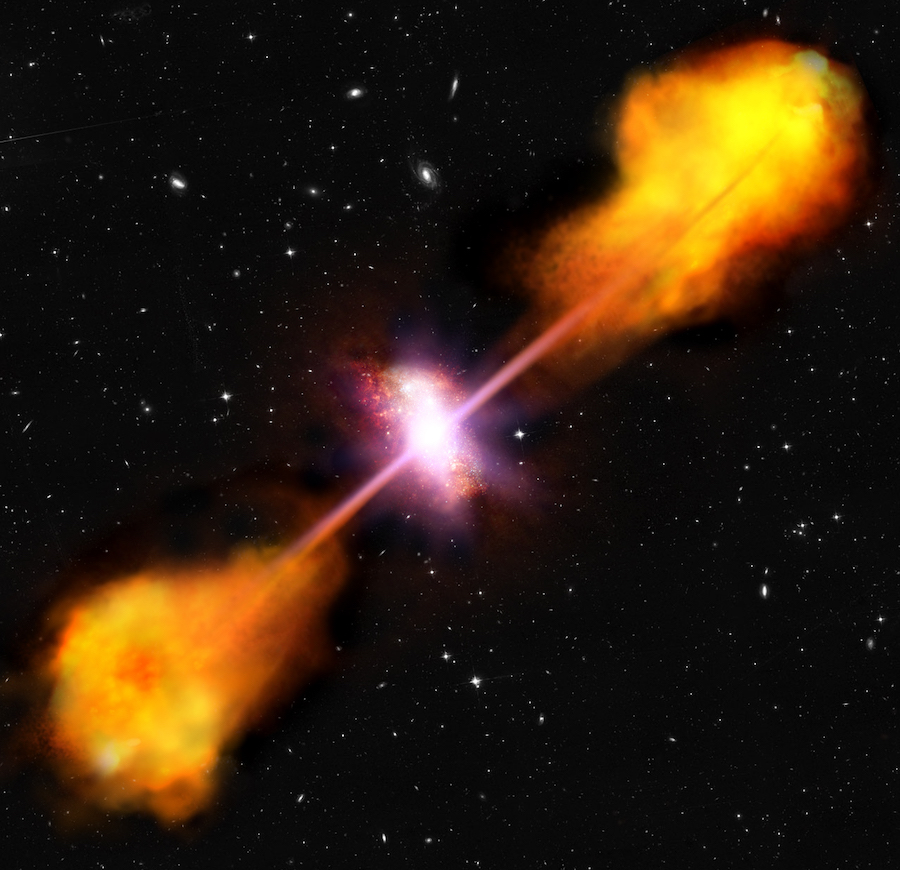
- This illustration of a radio-loud quasar that is embedded within a star-forming galaxy gives a close-up look of how giant radio galaxies are expected to emerge. At the center of an active galaxy with a supermassive black hole, jets are emitted that slam into the larger galactic halo, energizing the gas and plasma and causing radio emissions in the form of jets close by the black hole, and then plumes and/or lobes farther away. Both supermassive and stellar-mass black holes have overwhelming evidence supporting their existence.
Then Cygnus X-1, an X-ray emitting black hole candidate, was found within the Milky Way.
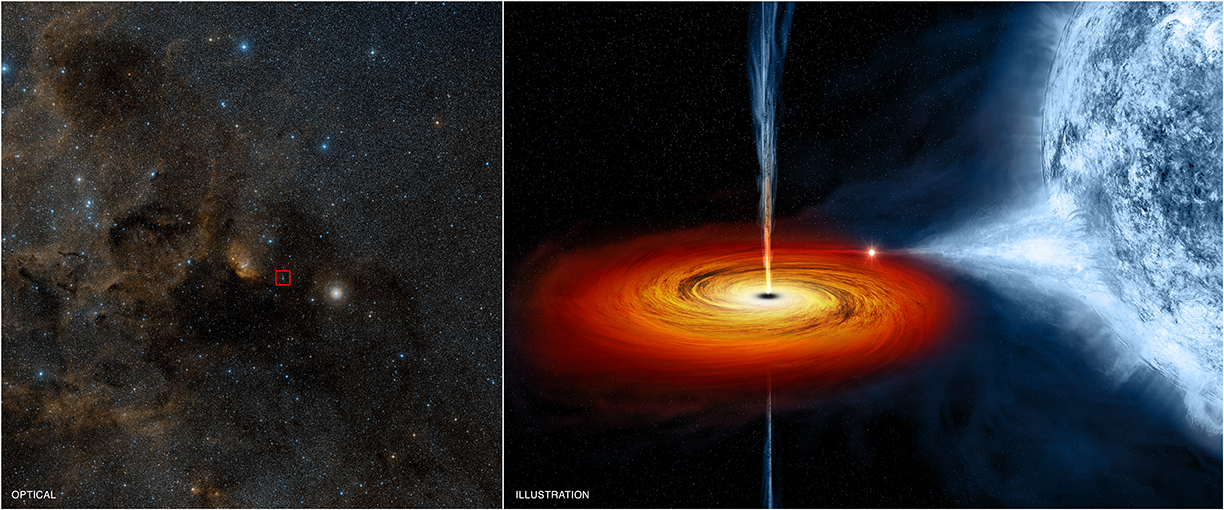
Discovered in 1964 as an X-ray emitting source consistent with a stellar object orbiting a black hole, Cygnus X-1 represents the first black hole candidate known within the Milky Way. Cygnus X-1 is located near large active regions of star formation in the Milky Way: precisely the location expected to find an X-ray emitting black hole binary.
(Credit: X-ray: NASA/CXC; Optical: Digitized Sky Survey)
Meanwhile, Roger Penrose demonstrated, astrophysical, how black holes could pragmatically form in our Universe.

- When matter collapses, it can inevitably form a black hole. Penrose was the first to work out the physics of the spacetime, applicable to all observers at all points in space and at all instants in time, that governs a system such as this. His conception has been the gold standard in General Relativity ever since.
(Credit: Royal Swedish Academy of Sciences)
John Wheeler gave the name “black holes” in 1968.
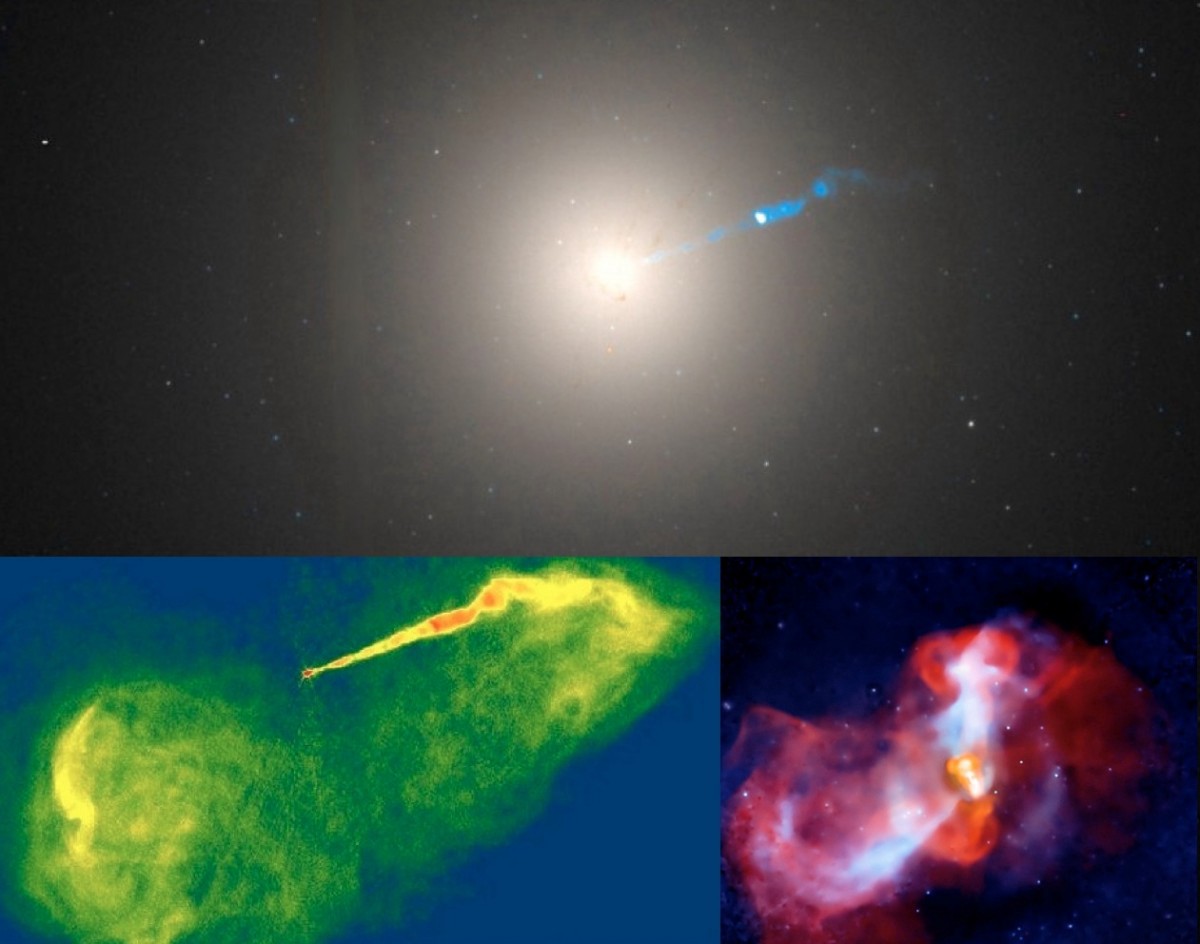
- This three-panel view showcases the central region of galaxy Messier 87, home to the largest black hole (of about 6.5 billion solar masses) known within ~100 million light-years of us. The optical jet (top), radio lobes (lower left), and ultra-hot X-ray omitting signatures (lower right) all indicate the presence of an ultra massive black hole, recently confirmed by the Event Horizon Telescope’s direct measurements.
(Credit: Optical: Hubble/NASA/Wiki sky; Radio: NRA O /Very Large Array; X-ray: NASA/Chandra/CXC)
Once speculative, the modern case for them is overwhelming.
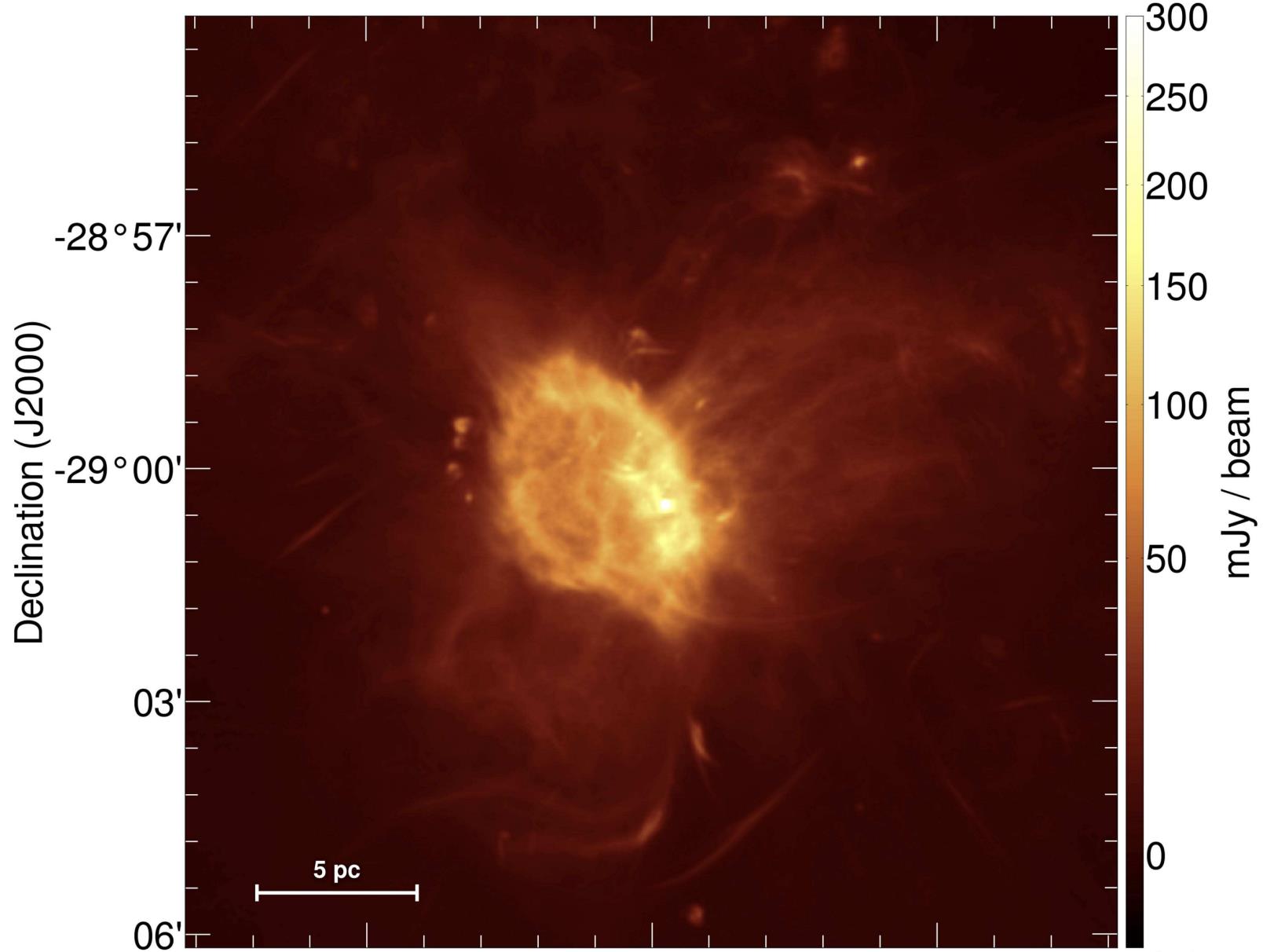
This view of the cocoon surrounding the Milky Way’s galactic center is only ~10 light-years across, but contains and is possibly powered by our central, supermassive black hole that weighs in at ~4 million times the mass of our Sun.
(Credit: I. Heywood et al., 2022')
X-ray emissions appear from accelerating, in falling, accreted matter.

- On September 14, 2013, astronomers caught the largest X-ray flare ever detected from the supermassive black hole at the center of the Milky Way, known as Sagittarius A*. The emission coming from the black hole in many wavelengths of light have hinted at its properties, but there’s no substitute for a direct observation of its event horizon.
(Credit: NASA/CXC/Amherst College / et al.)
Individual stars orbit these massive, non-luminous objects.

- This 20-year time-lapse of stars near the center of our galaxy comes from the ESO, published in 2018. Note how the resolution and sensitivity of the features sharpen and improve toward the end, all orbiting our galaxy’s (invisible) central supermassive black hole. Practically every large galaxy, even at early times, is thought to house a supermassive black hole, but only the one at the center of the Milky Way is close enough to see the motions of individual stars around it.
(Credit: ESO/MPE)
Gravitational waves arise from both in spirals
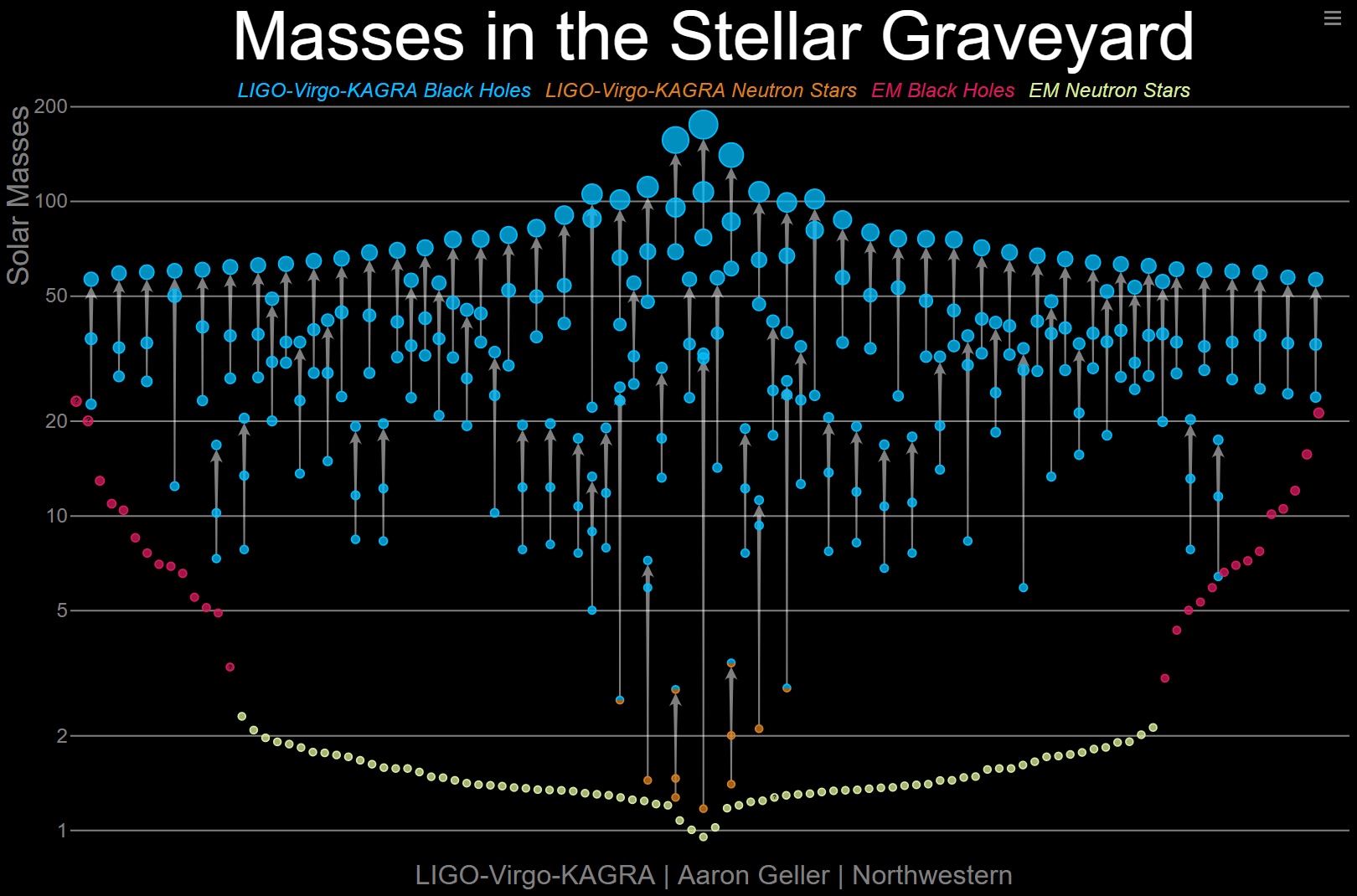
- The most up-to-date plot, as of November 2021, of all the black holes and neutron stars observed both electromagnetically and through gravitational waves. As you can clearly see, there is no “gap” between 2 and 5 solar masses any longer; rather, that population exists, and is likely composed of black holes that formed from the mergers of neutron stars, consistent with the event of August 17, 2017.
(Credit: Aaron Geller / Northwestern)
and mergers.

- When two neutron stars collide, if their total mass is great enough, they won’t just result in a kilo nova explosion and the ubiquitous creation of heavy elements, but will lead to the formation of a novel black hole from the post-merger remnant. Gravitational waves and gamma-rays from the merger appear to travel at indistinguishable speeds: the speed of all massless particles.
(Credit: Robin/Carnegie Institution for Science)
And photon emissions now reveal their horizons,

- Size comparison of the two black holes imaged by the Event Horizon Telescope Collaboration: M87*, at the heart of the galaxy Messier 87, and Sagittarius A*, at the center of the Milky Way. Although Messier 87’s black hole is easier to image because of the slow time variation, the one around the center of the Milky Way is the largest as viewed from Earth.
(Credit: Event HorizonTelescope collaboration (Acknowledgment: LIA Medeiros, xkcd))
including polarization,

- Polarized view of the black hole in M87. The lines mark the orientation of polarization, which is related to the magnetic field around the shadow of the black hole. Note how much swirled this image appears that the original, which was more blob-like. It’s fully expected that all supermassive black holes will exhibit polarization signatures imprinted upon their radiation.
(Credit: Event Horizon Telescope collaboration)
directly. Welcome to the golden age for black holes.

- The time-averaged data from multiple different points in time that show a series of snapshots in the evolution of the radiation coming from Sagittarius A*. The “average” image structure belies the rapid time-evolution of the radiation around this object.



You must be logged in to post a comment.